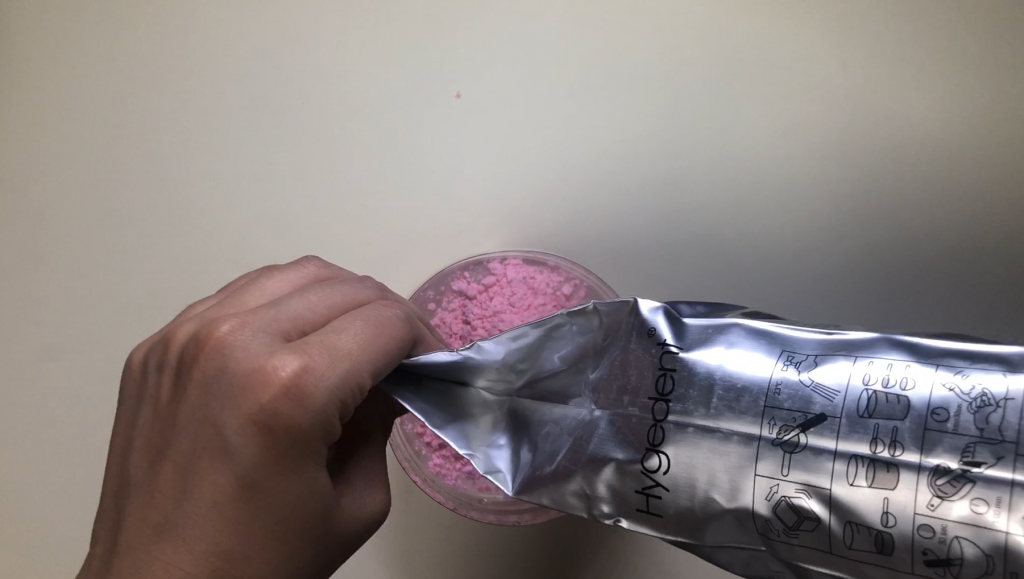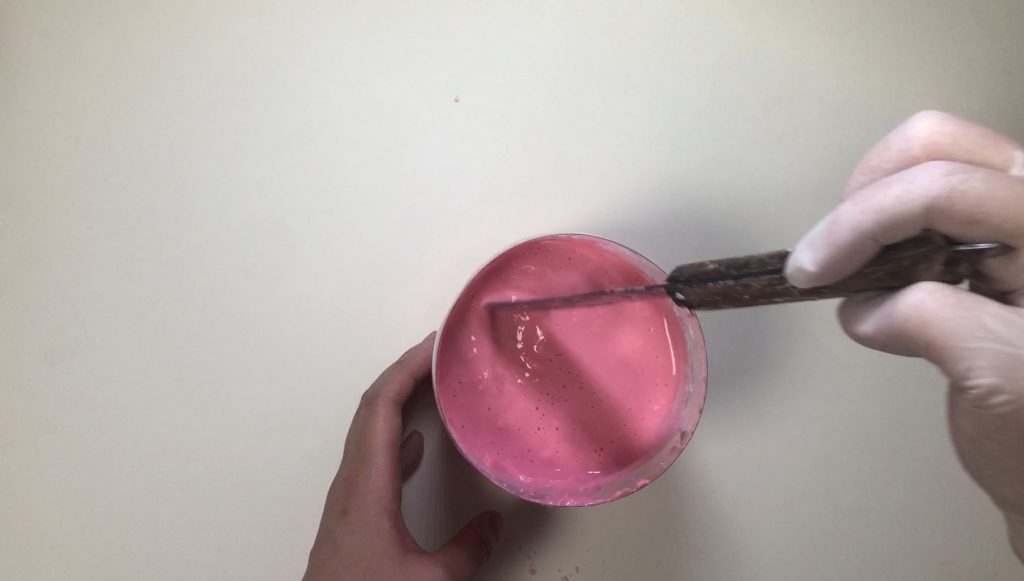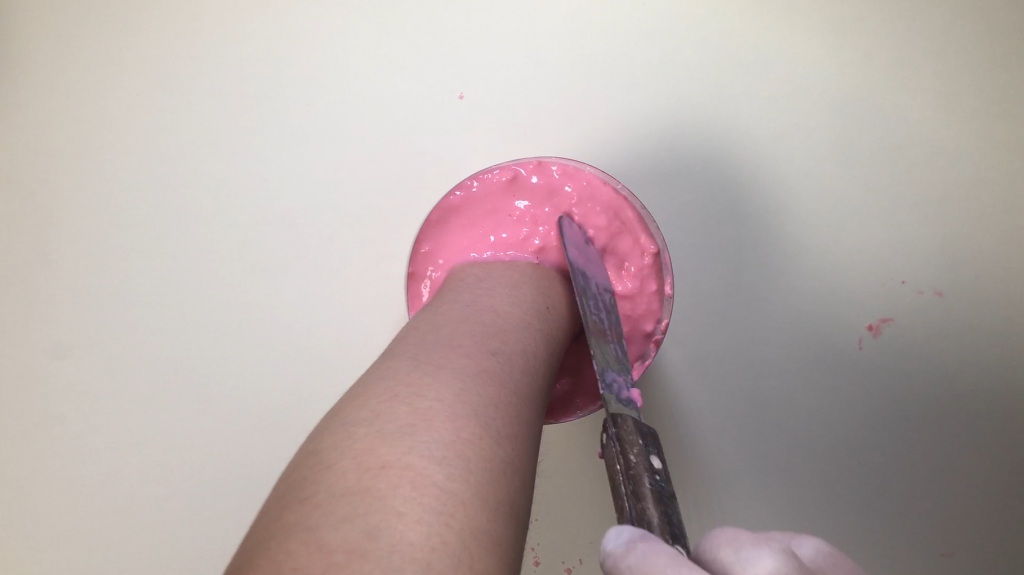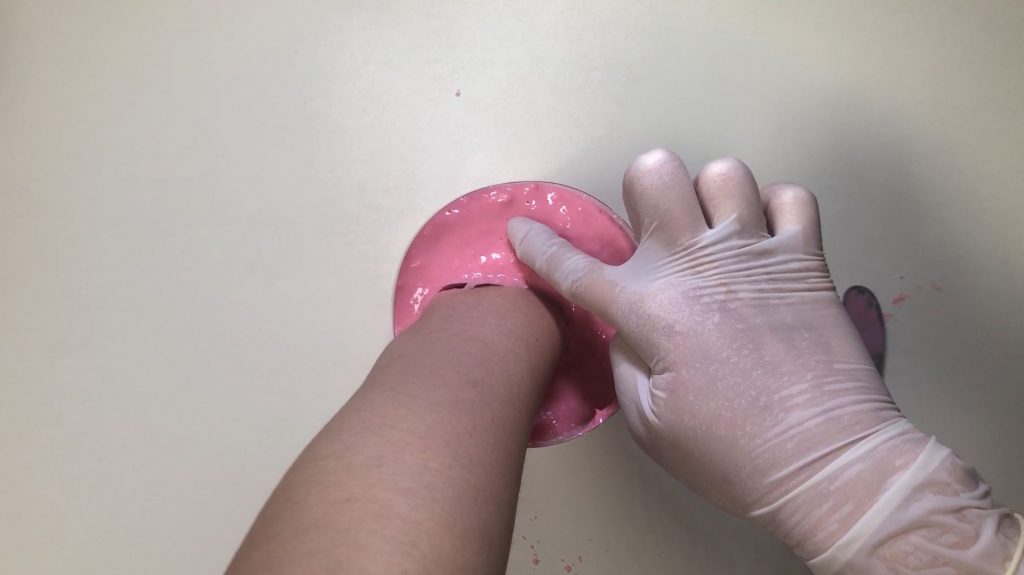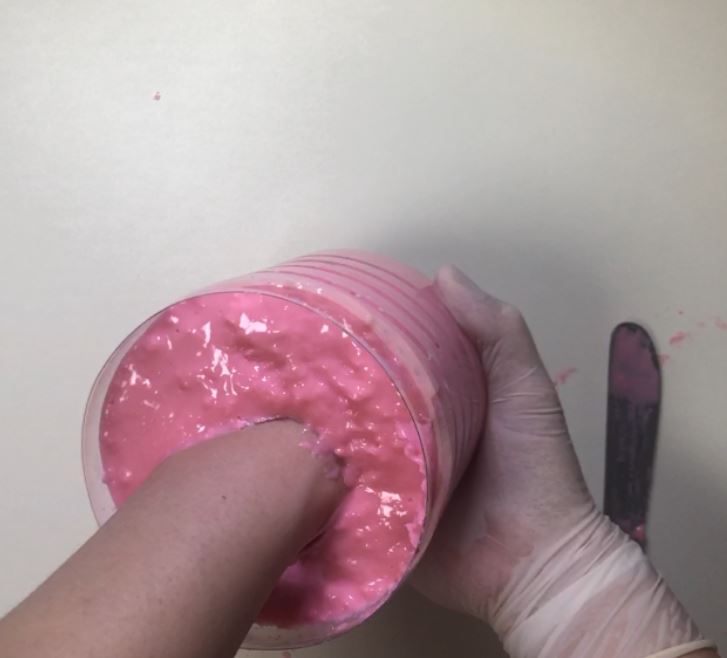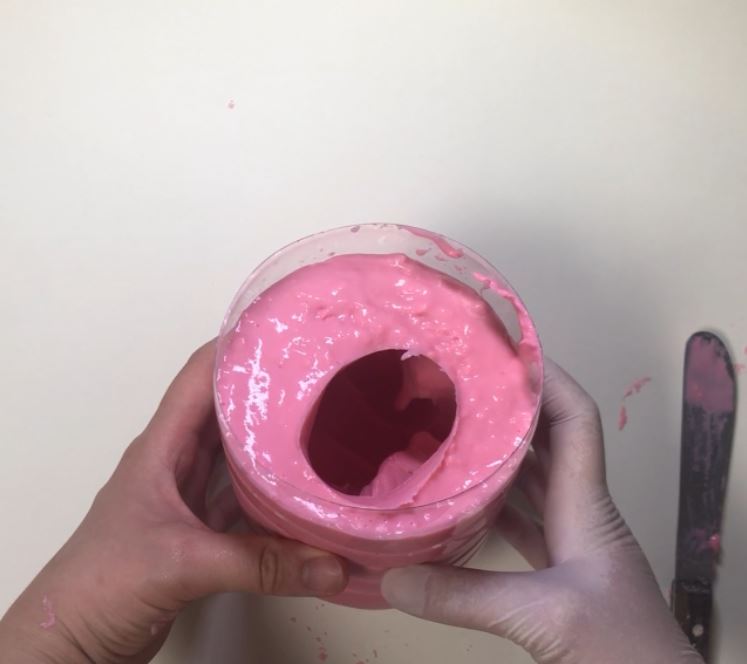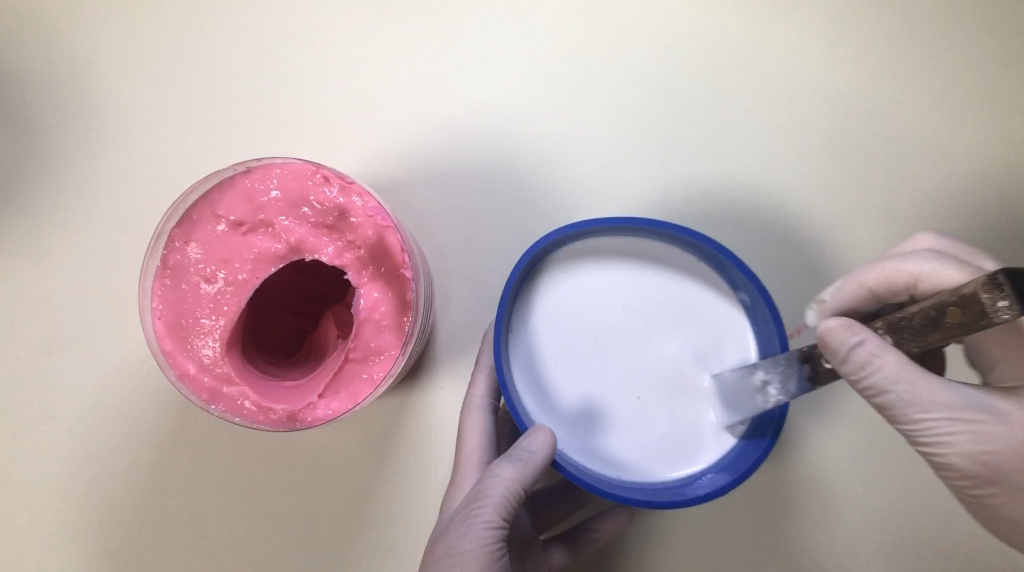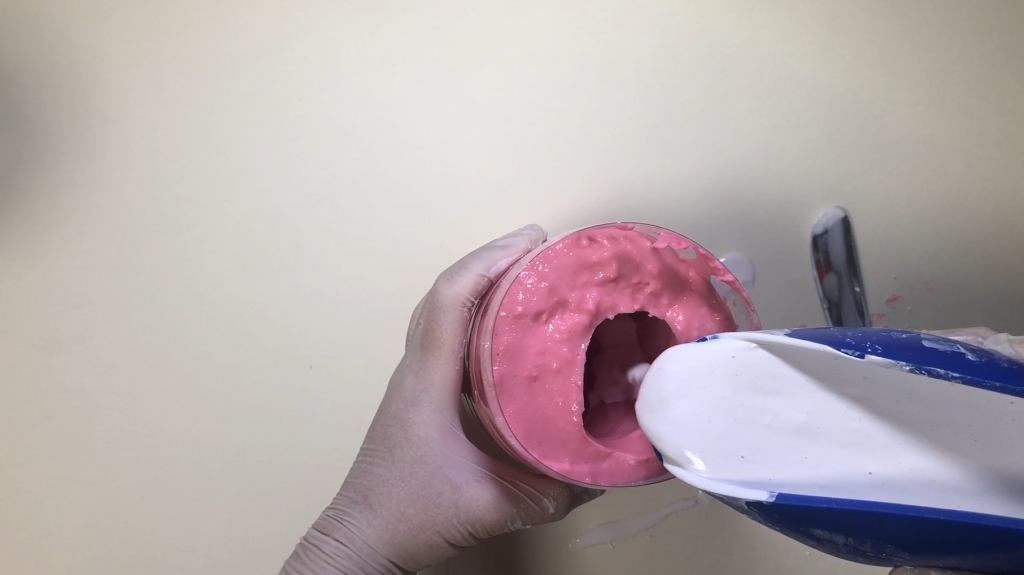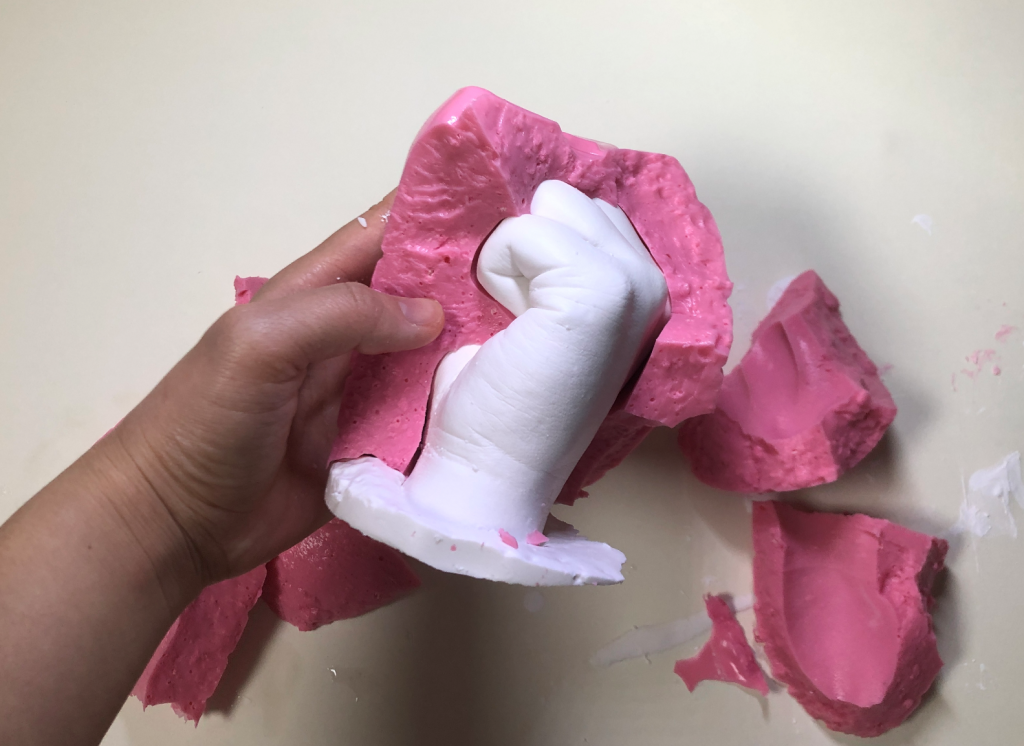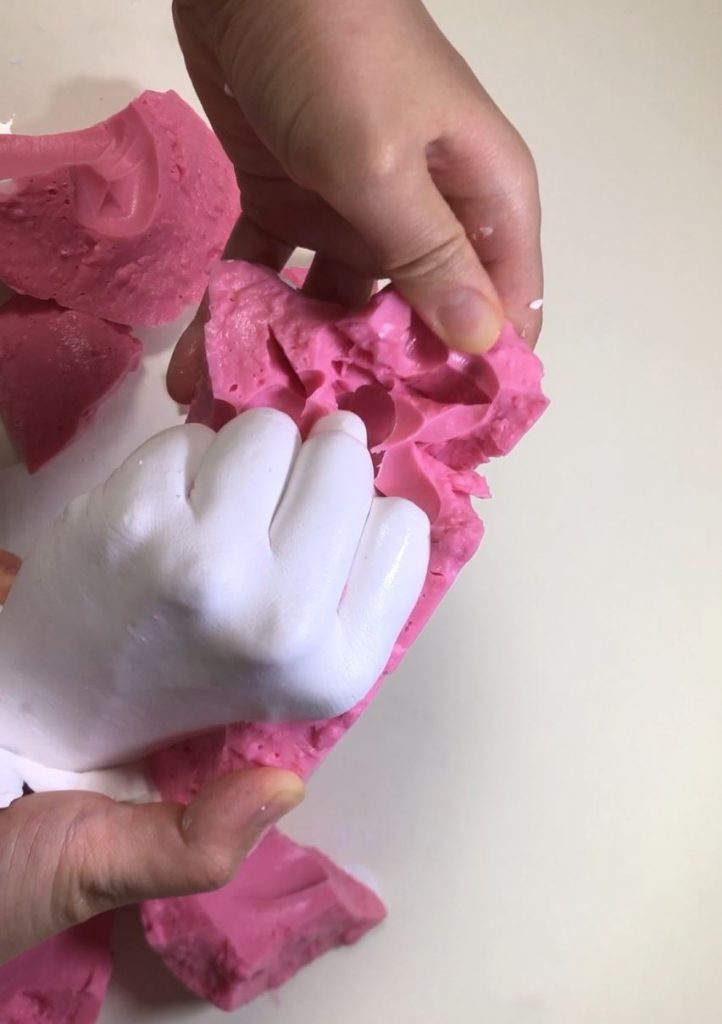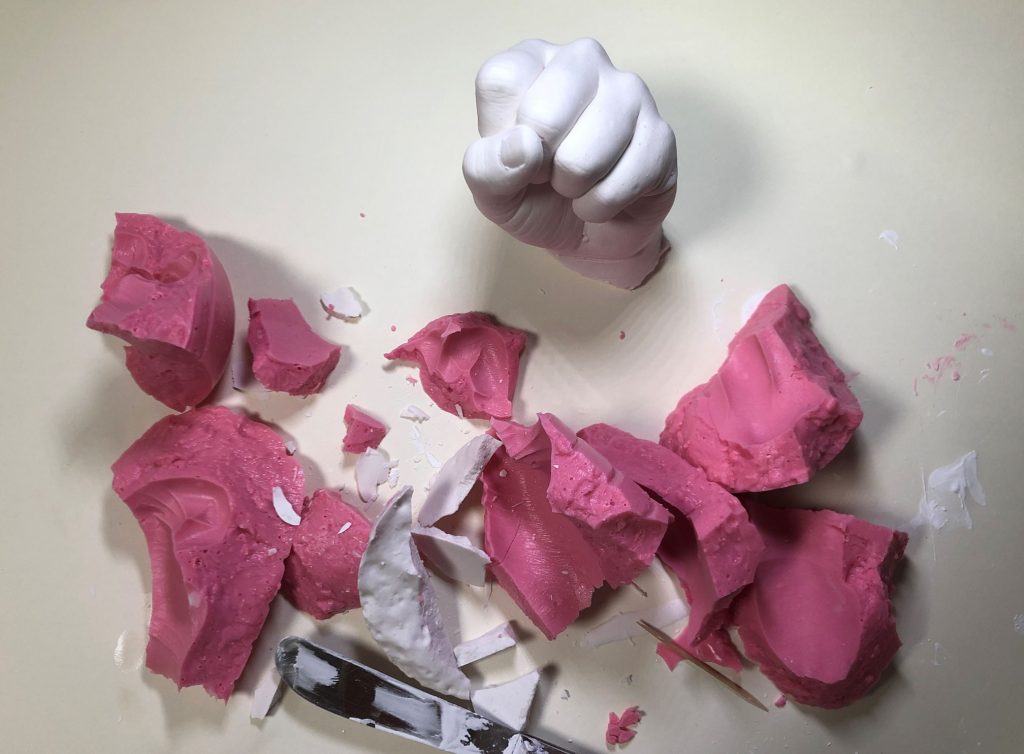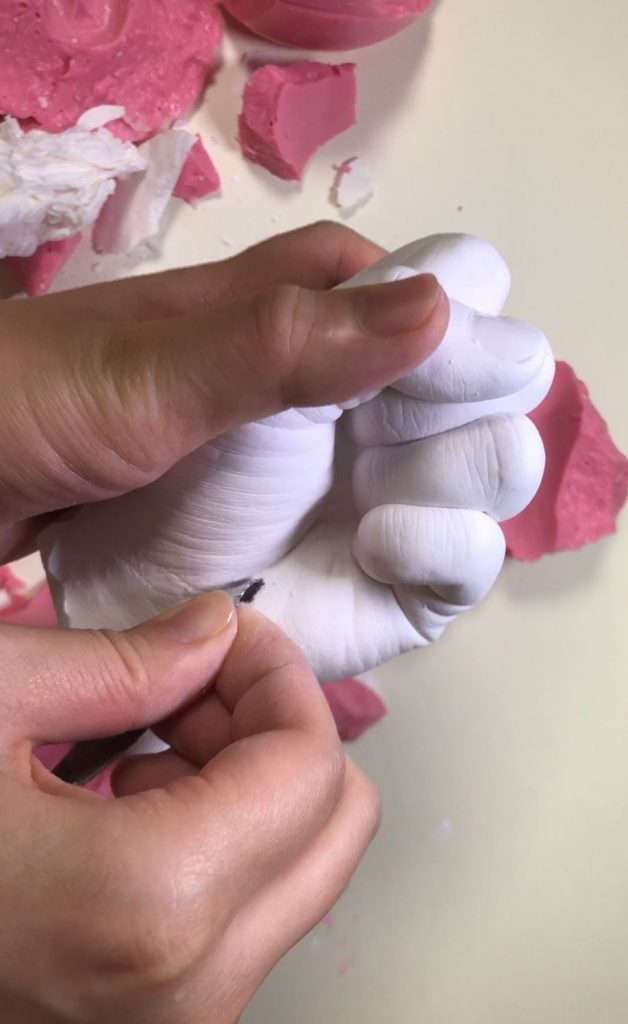***Wear safety glasses while working with chemistry
How to lifecast a hand with Alginate
You will need the following materials and tools:
· Alginate
· Water
· Containers
· Stir stick
· Plaster (or other kinds of casting materials)
· Pressure chamber (recommended)
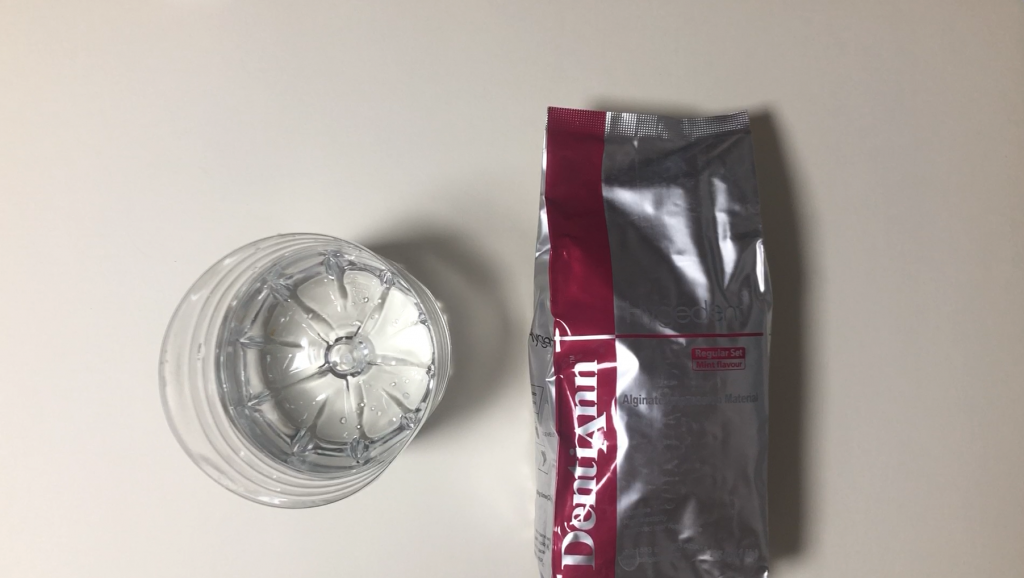
1. First, prepare water, alginate, a container for bucket mold.
2. Mix alginate with water. Follow the instructions for the alginate you have. The alginate I used was used in a ratio of 1:1 with water. The colder the water the slower the alginate will set.
3. Put your hand in the mixed alginate and keep your hand still until the alginate sets to a rubbery texture. It will take only a few minutes.
4. Carefully remove your hands from the mold so that you don’t tear the alginate. If your hands don’t come out easily, wiggling your hand a little by little.

5. Now, mix your plaster with water. You need to find the correct proportions of water for your plaster. What I used was 1:0.75 with water.
6. Slowly pour the plaster into the alginate mold. If you didn’t make enough plaster, you can pour more plaster over cured plaster. However, you may find slightly different color and line.
7. The plaster becomes hot, then cold, and hardens. It depends on the temperature, humidity, or size of the object but usually, small objects harden in 30 minutes. When the plaster cures, remove the alginate.
8. Repair the necessary parts. Sandpaper works well for plaster. If your object is porous, make a small amount of plaster and fill the surface and then sand evenly.
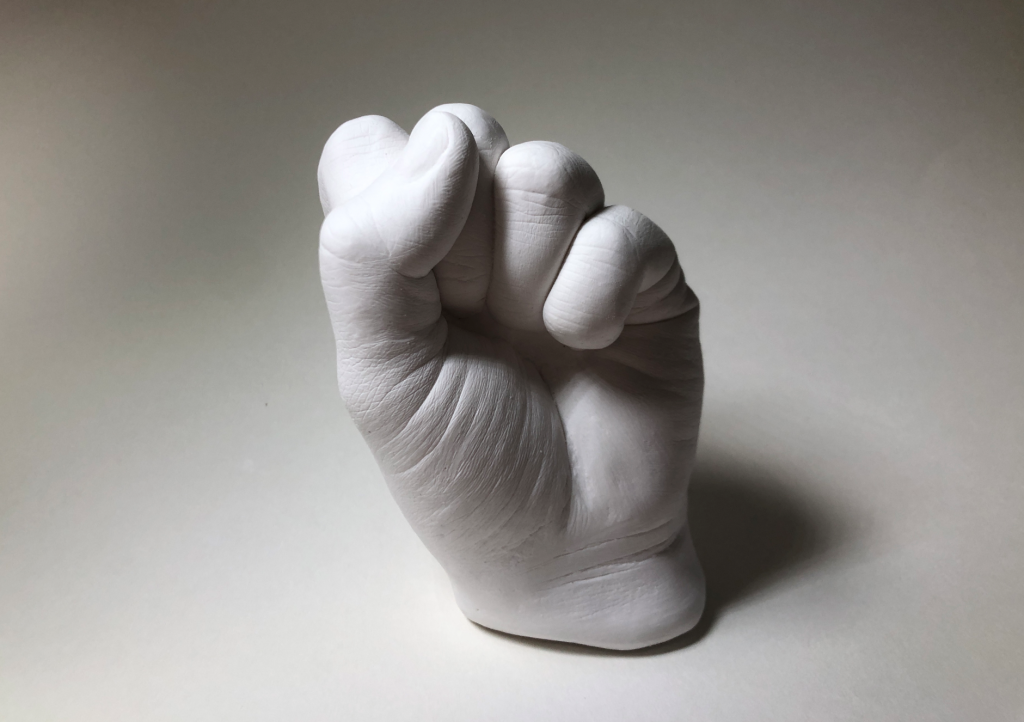
9. Complete your object. You can find alginate can capture the detailed texture.
*** Don’t forget to clean up

